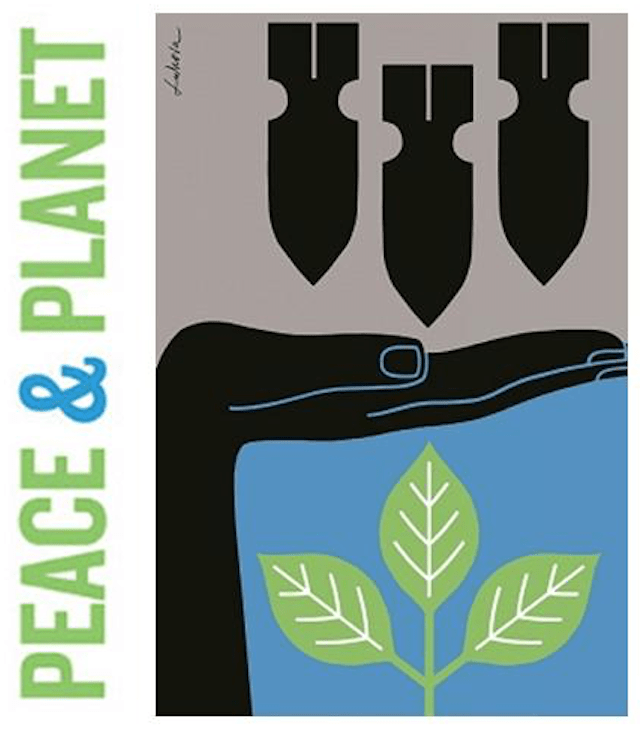 “It is because of nuclear weapons that the human race continues to be threatened. That is why, ultimately, the one thing that we atomic bomb survivors are calling for is the elimination of every last nuclear weapon.” – Chieko Watanabe – Nagasaki Hibakusha
“It is because of nuclear weapons that the human race continues to be threatened. That is why, ultimately, the one thing that we atomic bomb survivors are calling for is the elimination of every last nuclear weapon.” – Chieko Watanabe – Nagasaki Hibakusha
“The release of atomic power has changed everything except our way of thinking … the solution to this problem lies in the heart of mankind. If only I had known, I should have become a watchmaker.” – Albert Einstein
As we approach the 70th anniversaries of the August 6 and 9, 1945 U.S. atomic bombings of Hiroshima and Nagasaki, we have a unique opportunity to impact people’s thinking, to educate them about the crime of the A-bombings and the continuing dangers of nuclear weapons, and to build the popular movement needed to eliminate the threat they pose to human survival.
The need to abolish nuclear weapons is as urgent as ever. The hands of the Bulletin of the Atomic Scientists’ Doomsday Clock stand at 3 minutes to midnight. The U.S., which has driven the nuclear arms race since its beginning, plans to spend $1 trillion to “modernize” its nuclear bombs, warheads and delivery systems and maintain them well into the 21st century, while children go hungry and the country moves into relative decline for lack of infrastructure investment. Every other nuclear-armed state is modernizing its nuclear arsenal. And recent scientific studies demonstrate that even a limited exchange of 50-100 nuclear warheads will lead to global cooling, famine, and the deaths of up to 2 billion people across the planet. Nearly 16,000 nuclear weapons, 94% held by the United States and Russia, pose an intolerable threat to humanity and the global environment.
Nuclear weapons have again taken center stage in confrontations between the United States, its NATO allies, and Russia. These countries have turned a civil conflict in Ukraine into a violent proxy war. The tensions engendered by this confrontation have been intensified vastly—potentially catastrophically—by the brandishing of nuclear arms by both sides. This has included forward deployments of strategic bombers to Europe by the United States, positioning of Russian strategic bombers in Crimea, and an accelerated tempo of military exercises and patrols both conventional and nuclear. And the confrontation in Europe is but one of several potential nuclear flashpoints, with new tensions and arms-racing from the Western Pacific to South Asia.
BREAKING SILENCES – TAKING ACTION
We urge people of conscience everywhere to initiate 70th anniversary commemorative events to awaken their communities to the imperative of creating a nuclear-free world within our lifetimes. These anniversaries are an occasion to organize educational forums, to arrange photo and poster exhibitions, to circulate petitions, put on cultural or political events, publish op-eds, launch resolutions (including in parliaments and city councils), and to support specific nuclear abolition initiatives such as the Nuclear Zero case in the International Court of Justice, the Humanitarian Pledge “to stigmatise, prohibit and eliminate nuclear weapons,” demands for negotiation for a nuclear weapons convention, criminalizing nuclear weapons through the International Criminal Court, prohibiting nuclear weapons through national legislation, slashing spending on nuclear weapons (in nuclear armed States), prohibiting investments of public funds in nuclear weapons corporations (in non-nuclear States), and ending our personal investments in nuclear weapons, including the Don’t Bank on the Bomb campaign.
Recognizing that nuclear weapons abolition will not be won without broad and powerful people’s movements, we urge organizers of 70th anniversary Hiroshima-Nagasaki events to engage with people working to address other critical issues, including bloated military and nuclear weapons spending, the new era of confrontation between the USA/West, Russia and China, racism, cultures of violence, environmental protection and climate change, proliferation of small arms, poverty, human rights violations, civil conflicts and militarization of police, weaponization of space and cyberwarfare.
Commemorations can also be used to prepare for the next “Global Wave 2015” being coordinated by UNFOLD ZERO on the occasions of the U.N. General Assembly during the week of September 21 (International Day of Peace) to September 26 (International Day for the Total Elimination of Nuclear Weapons). See www.unfoldzero.org.
HIROSHIMA & NAGASAKI
Hiroshima and Nagasaki were two of the five cities that met the official criteria for possible U.S. A-bomb targets: cities with (albeit limited) military functions, and “densely packed workers’ homes.”
At 8:15 a.m. on August 6, 1945 the Little Boy atomic bomb was detonated over Shima Hospital in Hiroshima. Its fireball equaled the heat of the sun and was 1,200 feet in diameter. In the first second everyone within a two mile radius was exposed to a deadly radioactive wave. This was followed by a massive blast wave which destroyed nearly every building in the city. Then came the heat wave which ignited fires across the region. People in the hypocenter, including children and students, were instantly vaporized. Survivors recall a nuclear Hell with the dying crying out, “Give me water”, people so badly burned that their eyeballs and skin hung from their bodies, severely burned people drowning as they climbed into cisterns or the city’s rivers in a futile effort to ease their pain. In the days that followed, thousands who initially appeared to have survived began dying from radiation poisoning. By year’s end an estimated 120,000 people had died from the single A-bomb.
Three days later, at 11:02 a.m., the Nagasaki A- bomb was detonated over the Urakami Cathedral, the largest church in Asia. Exploding more than a mile from its target, portions of the city were shielded from the most devastating impacts of the bomb, but most could not escape the second nuclear holocaust. By year’s end, more than 70,000 had perished.
To this day Hiroshima and Nagasaki A-bomb survivors (“Hibakusha”) continue to die from radiation and other A-bomb-related illnesses, and with their children and grandchildren continue to suffer from the physical and psychological effects of the bombing. With uranium mining, nuclear weapons fabrication and testing, and nuclear weapons accidents, there are nuclear weapons victims – global Hibakusha – in many countries, including but not limited to the nuclear-armed states.
The Hibakusha, witness/survivors of the A-bombs, who have repeatedly been nominated for the Nobel Peace Prize, warn that “human beings and nuclear weapons cannot coexist.” It is their fervent hope that nuclear weapons can be abolished in their lifetimes so that human beings never again suffer what they have endured.
THREE MYTHS
Three myths and institutional interests provide the foundation for continuing U.S. preparations for nuclear war.
Many still believe that the atomic bombings were necessary to end the war with Japan and accept President Truman’s lie, designed to distract attention from the bombs’ indiscriminate mass murder of civilians, that the atom bombings saved the lives of half a million U.S. troops. In fact, the consensus among historians is that the A-bombings were NOT necessary to bring an end to the war. The historical record demonstrates that the Japanese government was attempting to surrender on terms that the United States ultimately accepted; that U.S. Secretary of War Stimson advised Truman that Japan’s surrender could be negotiated on terms acceptable to the United States; and that other U.S. military leaders, including General Eisenhower and Admiral Leahy, thought, “It wasn’t necessary to hit them with that awful thing.”
There were numerous factors including electoral calculations, vengeance, racism, and institutional inertia that contributed to Truman’s decision to devastate the two cities. However, the determinative reasons were both to bring the war to an immediate end, so that the United States would not have to share influence with the Soviet Union in Northern China, Manchuria and Korea, and to intimidate Moscow’s leaders by demonstrating the apocalyptic power of nuclear weapons and the United States willingness to use them – even against civilians. The people of Hiroshima and Nagasaki were among the first victims of the Cold War.
It is popularly believed that “Mutual Assured Deterrence” (MAD) guarantees nuclear security and ensures that no nuclear power would ever engage in a nationally suicidal nuclear attack. Yet the former head of U.S. Strategic Command, General Lee Butler, warns that “The first victim in a nuclear crisis is deterrence.” If a nation has a mortal enemy, he recently explained, “you probably don’t have a very close relationship with them, which means you probably don’t understand how they think…how they will respond under very threatening circumstances. The Soviets never bought into [deterrence]. For them, one warhead on the motherland, and that was it.” Eric Schlosser, the author of Command and Control, has documented dozens of nuclear weapons accidents and miscalculations, concluding that we are alive today more as consequence of luck than policy. And deterrence relies on the false assumption that those with their fingers on the nuclear button will always be rational.
Most people believe that nuclear weapons have not been used since the Nagasaki A-bombing. Former senior U.S. nuclear war planner Daniel Ellsberg has told us otherwise, testifying that the United States has repeatedly used nuclear weapons “in the way that you use a gun when you point it at someone’s head in a confrontation….whether or not you pull the trigger…[and] You’re also using it when you have it on your hip ostentatiously.” During wars and international crises, the United States has prepared and/or threatened to initiate nuclear war on at least thirty occasions. Each of the other eight nuclear weapons states has made such threats at least once.
TOGETHER WE CAN PREVAIL – NUCLEAR WEAPONS ABOLITION IS POSSIBLE!
From the adoption of the first United Nations General Assembly resolution in 1945, through the promulgation of the Nuclear Non-Proliferation Treaty (NPT) in 1968, to the recent International Conferences on Human Consequences of Nuclear Weapons and the Humanitarian Pledge signed by over 100 nations this year, the vast majority of the world’s nations have demanded that the world’s nuclear weapons be eliminated. The International Court of Justice has issued an authoritative interpretation of NPT Article VI, unanimously concluding: “There exists an obligation to pursue in good faith and bring to a conclusion negotiations leading to nuclear disarmament in all its aspects under strict and effective international control.” Non-governmental organizations have developed a model nuclear weapons abolition treaty which has been circulated by the United Nations as an official document. And this spring, the Peace & Planet Mobilization for a Nuclear-Free, Peaceful, Just and Sustainable World brought thousands of activists from around the world and nearly eight million petition signatures to New York and the United Nations demanding immediate commencement of negotiations to abolish nuclear weapons – with a timeline. These actions were reinforced by a Global Wave 2015 of more than 100 actions in fifty nations.
Please join us in commemorating the 70th anniversary of the U.S. atomic bombings of Hiroshima and Nagasaki. It’s long past time to change our thinking, and to build the international movement for a nuclear weapons-free world.
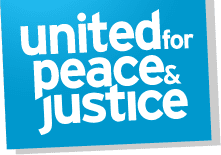
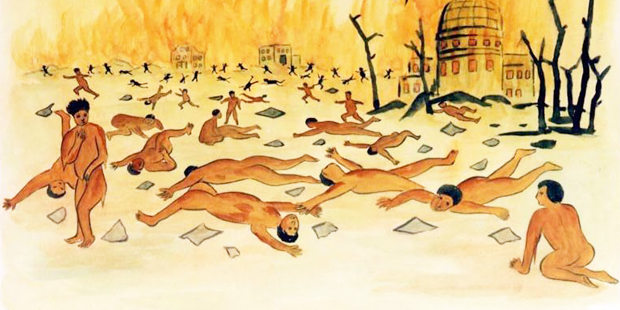
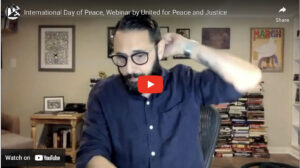
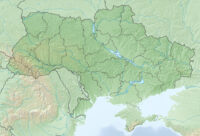
Hello and thankyou for this new inspiring US Global Wave of Action for Peace & Justice
with a prime focus on Prohibition and abolition of nuclear weapons.
You will be pleased to know that we are organising a speaking tour for Tim Wright -ICAN Director of Asia Pacific to talk about the Humanitarian Pledge to Ban Nuclear Weapons.
The NZ Peace Foundation is writing letters to our government to push this forward. We are also arranging highschool and university meetings for Hiroshima Peace Week to regenerate public awareness that NZ still needs to do more to help humanity establish a world free of nuclear weapons and fulfil its role as a peacemaker nation.
Laurie Ross of Nuclear Free New Zealand
I think in a lot of scenarios there are hishbukaa, a lot of people from Hurrican Katrina are still suffering for example. I have been recently reading an article from my Environmental Policy class that focuses on how American media goes through an issue-attention cycle. Basically that issues often cycle through mass panic and heavy media coverage until it finally dribbles out of the public’s eye regardless of the actual recovered status of the issue (mad cow or acid rain for example) simply because nothing more exciting has happened. It’s a really old article actually from the 70 s but it totally applies to this day even more so.
1 $billion dollars for nuclear death deliveries? 2$ billion for our planet’s potential world-wide victims? The scope of this Doomsday investment by our country could lead to the most horrifying crime the U S has ever been party to. That’s some party! I pray that more sensible
minds, like those in Ross’s Nuclear Free New Zealand, will prevail in the campaign to abolish
this threat to our world.